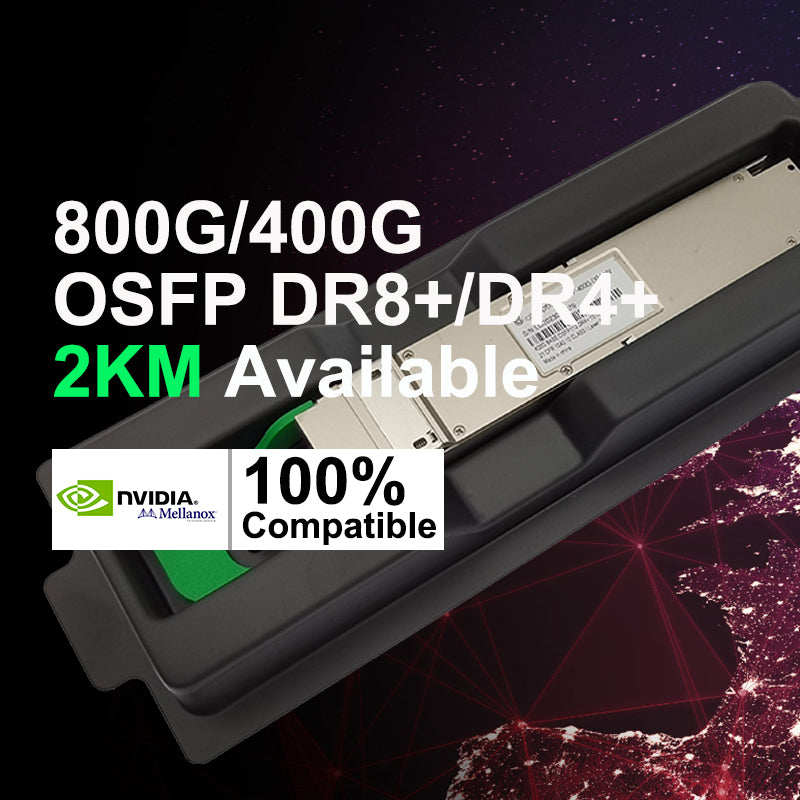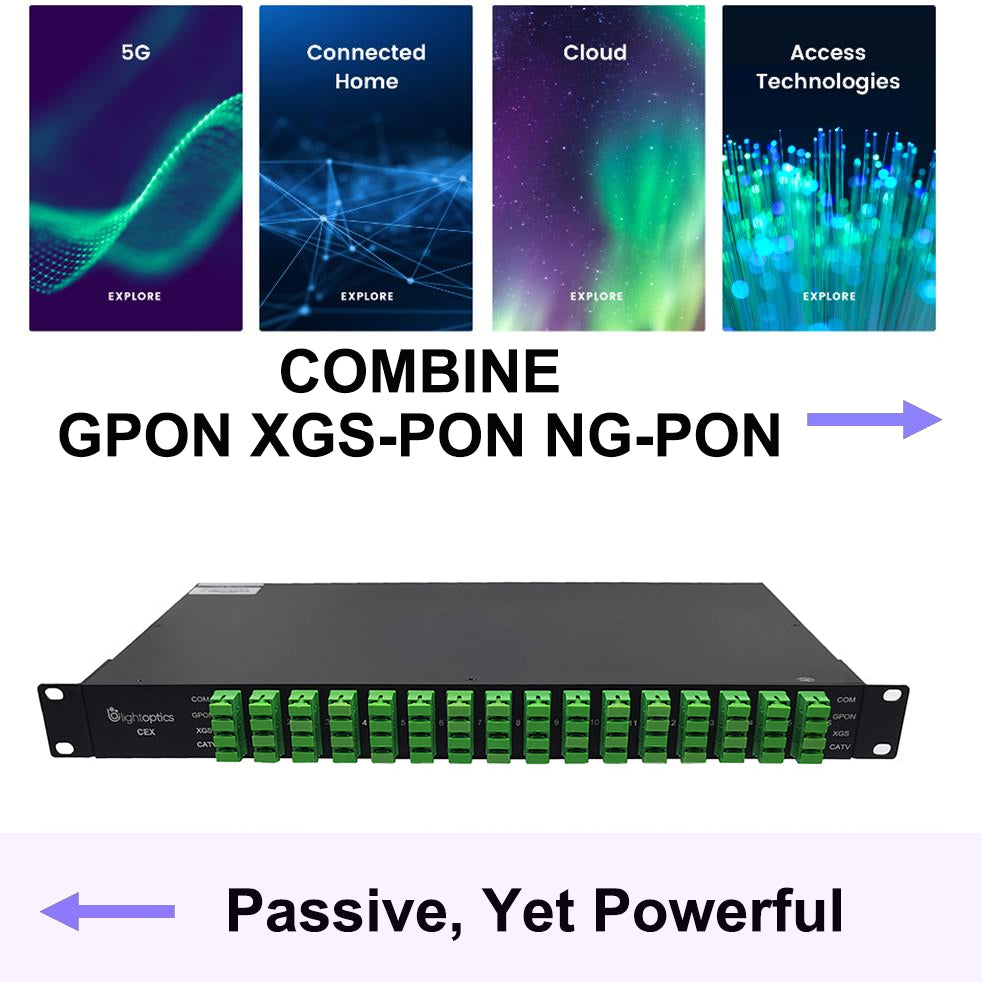What is Fiber Optic Adapter (Coupler) ?
Fiber optic adapter (also called coupler) is a small device that used to terminate or link the fiber optic cables or fiber optic connectors between two fiber optic lines. They designed to connect two optical cables together and come in versions to connect single fibers together (simplex), two fibers together (duplex), or sometimes four fibers together (quad). The optical fiber adapter can be inserted into different types of optical connectors at both ends of the optical fiber adapter to realize the conversion between different interfaces such as FC, SC, ST, LC, MTRJ, MPO and E2000, and is widely used in optical fiber distribution frames (ODFs) Instruments, providing superior, stable and reliable performance.
Features of Fiber Optic Adapter
Adapters are designed for multi-mode or single-mode cables. The single-mode adapters offer more precise alignment of the tips of the connectors (ferrules). It is ok to use single-mode adapters to connect multi-mode cables, but you should not use multi-mode adapters to connect single-mode cables. This can cause misalignment of the small single-mode fibers and loss of signal strength (attenuation).
Most adapters are female on both ends, to connect two cables. Connecting two cables together can allow two devices to communicate from a distance through a direct connection with the fiber optic line. Some are male-female, which typically plug into a port on a piece of equipment. This then allows the port to accept a different connector than for which it was originally designed. We discourage this use because we find the adapter extending from the equipment is subject to being bumped and breaking. Also, if not properly routed, the weight of the cable and connector hanging from the adapter may cause some misalignment and a degraded signal.
Functions of Fiber Optic Adapter
Fiber optic adapters are typically connecting cables with similar connectors (SC adapter to SC connector, LC adapter to LC Connector, etc.). Some adapters, called “hybrid”, accept different types of connectors (ST to SC, LC to SC, etc.). When the connectors have differing ferrule sizes (1.25mm to 2.5mm), as found in LC to SC adapters, the adapters are significantly more expensive because of a more complicated design/manufacturing process, it is necessary to use a hybrid connector.
There are also adapters that can be used to attach a bare fiber-optic cable to a Power Adapter. This piece allows the cable to fit into a connection slot, whether into a mating sleeve or into an electronic device. The fiber-optic cable can be fit into an adapter that works with any of the standard shaped connectors.
Most adapters are female on both ends, to connect two cables. Some are male-female, which typically plug into a port on a piece of equipment. This then allows the port to accept a different connector than for which it was originally designed. We discourage this use because we find the adapter extending from the equipment is subject to being bumped and breaking. Also, if not properly routed, the weight of the cable and connector hanging from the adapter may cause some misalignment and a degraded signal.
Fiber Optic Adapter types
The fiber optic adapters are many types because of the diversity of the connectors. In order to realize the fluent fiber optic connection, the fiber optic adapter panel shapes or types should be in accordance with the fiber optic connectors or cables.
Common shapes of the adapters are square, rectangular, or round that with FC, LC, ST, SC, MTRJ types. These simple types of adapters are often referred to as mating sleeves because they allow two cables to connect to one another. Some of these common line to line connectors are also built to connect three or four cables together.

There are also singlemode and multimode fiber optic adapters or single mode and multimode fiber optic connections. They are designed for singlemode or multimode cables. The singlemode adapters offer more precise alignment of the tips of the connectors (ferrules). It is nice to use singlemode adapters to connect multimode cables, but you should not use multimode adapters to connect singlemode cables. This can cause misalignment of the small singlemode fibers and loss of signal strength (attenuation).
Because the fiber adapters should fit the according connectors, the fiber optic adaptors sides and shape are made as per the connectors. Generally, ST adapter and FC adapter are metal body, LC, SC, MU, MTRJ, E2000 types are non-metal body. Single mode fiber optic adapters are with ceramic sleeves, multimode fiber optic adapters are bronze sleeves. But you can also use ceramic sleeve fiber optic adapters to link multimode connectors.

How to Choose a Fiber Optic Adapter?
Due to the wide variety of fiber optic adapters and the similar appearance of fiber optic adapters from different vendors, you may not know how to choose. In general, you should consider the following two tips when choosing a fiber optic adapter.
- Fiber Cable Type. If the fiber adapter needs to be connected to the same fiber cable type and connector, a fiber optic adapter with a square, rectangular or circular interface can be used. If the type of cable to be connected is different, a hybrid fiber adapter is required. This hybrid fiber adapter can connect any two types of fiber patch cords together. Due to the wide variety of hybrid fiber optic adapters, it is important to know what type of cable to connect before purchasing.
- The Sleeve Material of Fiber Adapter. Alignment sleeve is the most important component of fiber optic adapters. Some manufacturers choose metal as the material for the alignment bushings, but ceramic-made fiber optic adapters have proven to work much better than using metal as the alignment bushing. The fiber optic adapter, because the crystal structure of the ceramic is very hard and does not deform over time like metal, so it can achieve fast alignment and high-precision fiber end-face connection.
LightOptics offers all you need fiber adapters include LC Duplex, SC Simplex, ST, MPO/MTP, E2000, FC and other waterproof Senko IP LC, Senko IP SC, Senko IP MPO Fiber Adapters. Our bulkhead adapters accept a fiber connector on one side and have threads that can be used to mount the adapter into an OEM or custom fiber system. If you have any further questions about transceivers, you can always get in touch with www.lightoptics.co.uk staff via sales@lightoptics.co.uk.












